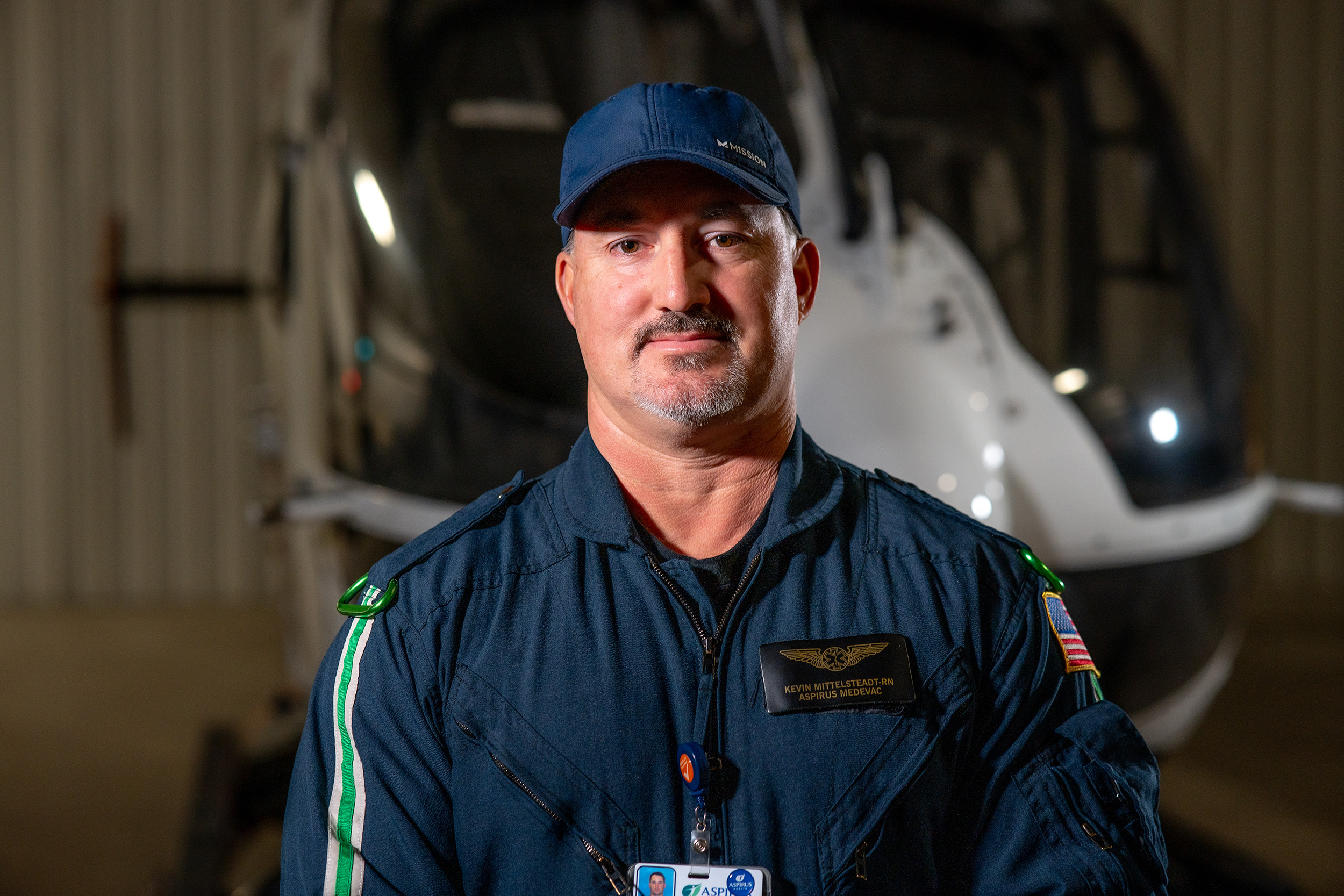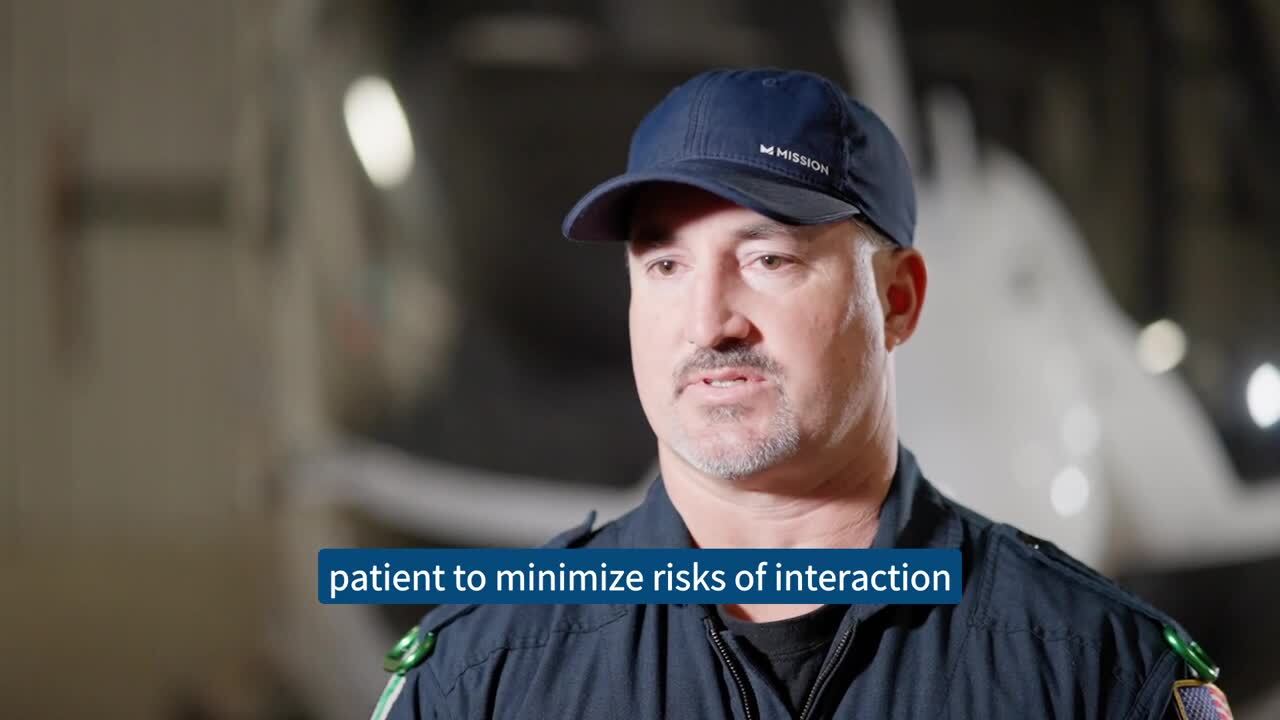Critical Lifesaving Measures
Blood Supply Onboard Aspirus MedEvac Helicopters Allows for Swift Treatment of Trauma Patients
1/26/2024

Kevin Mittelsteadt, Flight RN, Aspirus MedEvac
When an Aspirus
MedEvac helicopter responds to the scene of an accident, or interfacility
transport, the flight crew arrives with crucial lifesaving equipment on board
to care for the most critically ill patients, and that includes blood.
People with serious
external or internal bleeding because of a car, ATV, boat, snowmobile, or other
accident, can deteriorate quickly. One of the most effective ways to treat this
blood loss is with a blood transfusion. If needed, critically injured patients
transported by both MedEvac helicopters are able to receive blood while en
route to the hospital. Blood carries oxygen that is vital to major organs
including the brain, and as a result, gives patients their best chance of
survival.
“We like to have as
many tools available as possible in our aircraft for patients losing large
amounts of blood, whether it be a trauma situation or a gastrointestinal (GI)
bleed or anywhere you may be losing large amounts of blood,” said Kevin
Mittelsteadt, Flight RN, Aspirus MedEvac. “Our two MedEvac helicopters carry
two units of universal O negative blood, the most common blood type needed for
emergency transfusions, every day. That’s roughly 350 milliliters of packed red
blood cells.”
During transport,
early administration of blood products to a trauma or critically ill patient
can help improve their survival chances. This is especially valuable in rural
areas where there may be limited access to donated blood. The blood is provided
by our Aspirus Laboratory employees at Howard Young Medical Center in Woodruff
and Aspirus Wausau Hospital in Wausau and stored in a specialized cooler.
It’s possible to
carry blood on the aircraft thanks to generous donors from the local blood
donation centers. “Even if you’re not in patient care, you can still help save
a life by donating blood,” added Mittelsteadt. “Donating blood is a quick,
simple and amazing way to give back to your community.”
In addition to
carrying blood, the lifesaving equipment on the aircraft includes cardiac
monitors, defibrillator, suction unit, ventilator, infusion pumps, cardiac
pacemakers, pulse oximeters, oxygen and a full range of advanced life support
pharmaceuticals.

Back to all Posts